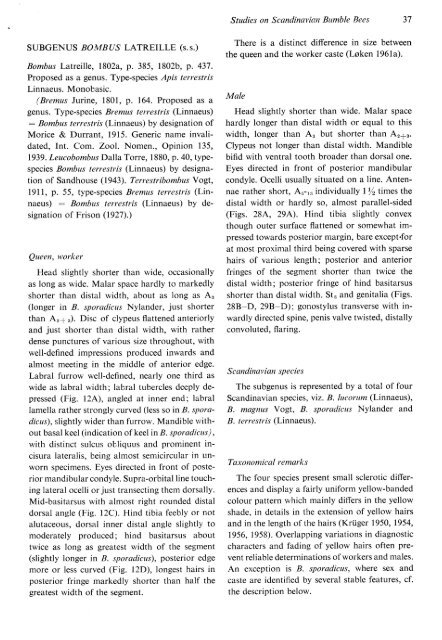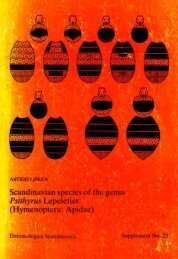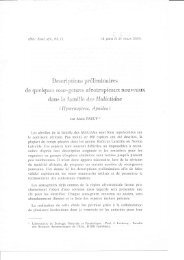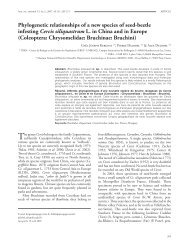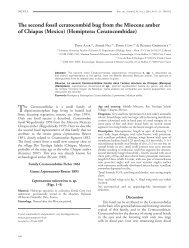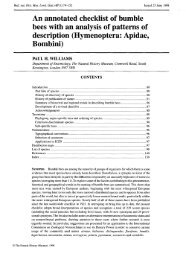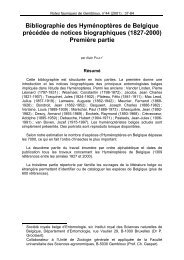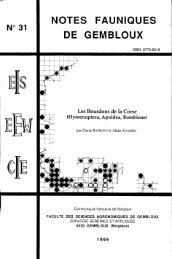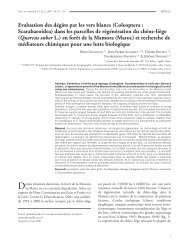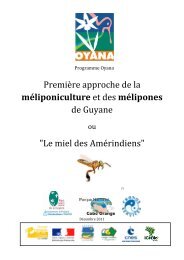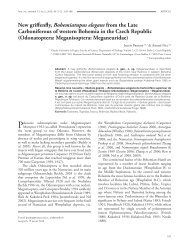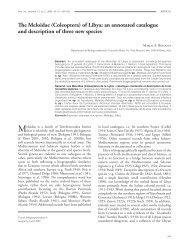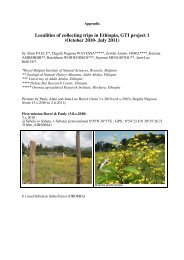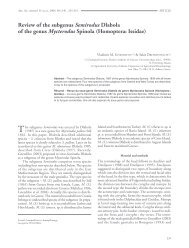'1cleg 6z-alunf L :oleru i'1deg gZ-,{eIN B I : re>lro,/K i '1deg I-llreIV 9I : ueonS 'roqiue}-deg ;o pue o1 prdy Jo otrpplhtr 'uosoas rl&g'(ZgeI 'A96I lorlosseF{) sarrrolor gerus reqler 6ur-cnpord'punorE rqt ur lsoN'Jerols-uellod'$a^[tSolotg'(001 'd '6t61 Erure11) eueqrs urolsel11;o ged uror.{}nos - (USSn ueedorng Ier}ua3 icll-l€tt eqt :puelod urolseg ierpuecsouueJ ipuulerlldecxe solsJ rislilrg) eCornE '(snrcrrqe$ smuaao,r-o^r ',s 'g'saltadsqns ary lo uolryqlrySlp lotot aqJ'(SqO1 sulnglE :086Iuosspuelrg) pueldel ol rlgou ror{UnJ Burqceerlred uJOlseA\ oqi ur pue N "Vg u(1reeu ol qgorr.{rlunoc eq} lnoq8norq} Eurrrnccg 'paopg'wnro)nl 'g ol pssrAoJ-puirg'SUN eunlEurq'eEoqr1.7 :puoluouttsoA. 1INZ$51IN ro)i€rolso ';e1s;e1sg 'Sl{N p^U er}so ,-IWZSl{N nAI e1esdd11 '-IWZ SlIt{ gplurgA ,SUt{ 'slINIopueAeftpt 'suN eSreqEuglS ' nwz -IWZ SUNruloq{co}s 'suN ro}soHoIs 'sUN osuelupgu ,suNgU 'SUN r.qoqoqp,(U 'SUNI oqp,iU .SIIN {qspN-ue3e1so11 'SIIN osuntr l 'SIIN seuslr€uuef .SIINueEues8uny 'SUN els8et; 'SUNI eunletr{ ,SUNelqqll oqEH 'suN ,tqs88eg 'suN {qeH ,sl{N fq-reu-ru€H 'sl{N OLHID 'SUN ue{r^ureD 's}IN punslo{e'SIIN 'SHN {l^,i( seupnrg ,St{N ute8uy ,SUI{eBunul17 :puDlddn 'SUN loqopuv ,SUN elly ,e1e;1'slIN EITEA 'SUN 'SUN 9]n uerllll 'sl{N oserfa'SIIN Eroqeunl 'SUN e8urllna 'SIIN ospre^S ,SIIN,{qpung ero}S 'SUN ,roqu-re[15 'SUN ruloq>lco]S'St{N urioilorreds 'SUN LUel€S ,SUNI uopeqofslps'SUN eure{e6 'SIIN punsoloxo ,SUN ure^{oleNl'SUN uLueqseufN '-IWZ51IN Surdo>1,{51 ,SUNoqulgl tr 'SUN g)snry 'o;e81etr1,S1{NIen}lC ,SUNofsre8eg 'SUN euroguE 'SUI{ punslepuerfl :paopnw-napgs'SUN oJqerC 'peneuueng'puns;e{sv :ay,rr ^l'-IWZ 'fitrND SUN lBruy ,{qeuelg 'suNI stoJedglg' gWZ uo{rlrol{' gt,1tr7sr (0S0I uosspuepE) SUN (resrey) uep11{raffl{co}sog' o;qeuueudo;1, g.WZ:(rud1 'D pueldel tuo4 eletu 'uorlcorroJ Jel€sog 'SIIN guellg 'sto3rs18uefl :puolsloe .$INV ,,{qre111'SUN peqstunuel 'SUN re}so)-p,(S +IWZ.fl'\iz'('pttSIIT{uI repuv) '1espe;gPE}SIUOJ}S OE>IS .SUN UI.U€TIOSSOU 'SUNIBolld :uatloq.rtoqI :Eur pelsre^€Nl .l€pelunl4 'St{N ,{qete;1 ,S}IN e}lBH-aolloJ eqt ldecxe popnlcur lou eJea spJoceJ pesrneJun 'S1IN puerlsoqeuung 'SUN punssuolsAeHpue tuntornl 'g ,SUNrlll^\ pesnJuoc ueeq seq soroeds eq; puerlsll€^ofl :uolsnLlog 'S]IN eEuruur4 ,e;e4 ,SUN'slrN (r.tE)gV6I .BnV tI F o{stqy :.uld7 .1 .SgN elesy .S}INI epoqorol 'SIIN eueEuea 'SdN runuels ,aWZ SUN€urruleqllA 'SUN Boloro([ i (.tudl .ty, ) puo\doT .S]IN ep^g{S 'Sl{N }lnqreuuqs 'IAtrNC €re>ls ,S}IN Kqeel'slIN oqru,(1 'dtoluefoH 'suN StoqeloD?eurolre^e 'SuN .sl{Ni d.ro}xrle{re^O 'S}IN u,(qsn1y ,BelnT -sgrg 'SUN d-rolsue rA :puol7o3n7so71 'SUN >lrAope{S'xllex 'SUN uepog :uatrcq,tro^[ 'SUN e{srr{re}se^ 'g.W'Z dtouteflg 'pe1s,{U'flWZ euur}f ,VJA Eurclo4'sl{N rosuror}s 'gwz po{ls :uatrcqra$pA 's}IN II^-JroNI'1WZ -splo>lsuro'SIIN 11WZ Surdo>1ulT 'SUN oqesr€^X ,SUN;eEug11n 'puesourpH'SIIN oLusroC >le>lory 'g.WZ prEE epog'gfspuog 'nWZ Bteqsuerofl :paol'SUN elsgfg :punpDwtaSup' 'SUN puns -ry&"tatsp'lull{8gtrt :puvltog 'u,{qs8o4g'nWZ -tugrls 'uer1-ro1g 'epun8eg 'S1IN uqfipO ';erulleprqSUNe8uglfqrgt4i',(qene1;'SUN run;s8oH'1gWZ ofsutoll's)IN ]ollec epgCI :puoltLtlpf .-Iwz slIN uel€puueI 'flWZ runre>lE 'epgg :puole 'n1;lqz'Ee^tg :uappa[to11 .e8uy ,SIIN sroJIA ,S]IN WNg eE"laqs_ro>1eunl -Jelso'yWZ seueux1 'SUN our€ur€A'SUN os8ursrn'flWZ 'SIIN SUN II€^spunS elgqlle{S 'SUN e>1eef1e4 'pe1s3u1 'SUN p€tslll1 'SUN sguerI:pndlapayty 'AWZ 'SUN ueulutueqropgs 's;o;e1r;q,AWZ vJA11elqrpnH ';e8ueuueH 'SUN -tuos 'SIIN r€uelsspuelptus '-IWZsroJ)uperC ,oqqeqt[WZ SUN p,(U'>1rne11e>ls9d 'urueqs;e{so'I 'St{Ns€ullog '>lrnEteg trNC:puo1&u1stpg '11WZ Steqsg 'SIIN o.lqfguo{s 'p,(re>i;elq ',(q8unfl 'I-grJ 'g.WZ SIIN oqle{ro '-IWZ trNC llnquureT,SUN reruSUN ,{gsrog-elllH -l€) 'SIIN eperoH 'S)IN eure^>lsnH 'SU51 pegolpl'el^gg :puDlltrtspg'lep^ly 'SIIN >lr^uetse1 ,SIIN u^q 'nWZ -IWZ Buuer9 'epuelsseC'SIIN ,(qsllC 'SUNI-r€IIA 'SUN 3teq11ea 'uu;eg 'utoqpung 'eunJ erols gls{E 'S}II{ epoqe{uurE 'd"ro}sugrg'e[ 'S1IN u;en>1Etegorollos 'S]IN 8"req-rnfg '-IWZ S-dN s"ro;ueflls ,gfs .epoqeuv :puoqurs 'eSuruugJJ 'un;puog .SUN-pues 'yWZ 'SUN 51IN {l^}}gg Ereqxg 'S}IN sgN'S1{N erotrN '-IWZ $IN ?{r^pn-I 'e[ eEuruelg '>pnxe1'w1oqe1 'pe1sw1e11 'SUN eEurlegSUN pue$Ie-I 'SUN 'SUN'SIIN uol]€lsllg) 'ue8n1qrcH ltrn>iesorC ^olsug 'SUN pereerg :puDIloH'yWZ 'SIIN 'SIIN IBpnrnC uruer,{Jo€polC 'S)IN unlug 'SIIN >lrlsuunrg 'SUN L'g.WZ VWZ E;oqsenlgs 'SU51 d-reofgEteq,(19 'SIIN fqepgU '1gWZ'Sl{N gfsEulg : auffipe 'sroJrots 'ueruruell SUN fqeuuoll 'run;rgl4tr,SIIN'SI{NIso;eu11og' SUN e>lcBqulgr\l 'S'l{N ruo>llop{ 'SUNp,(reftop1 'Sl{N euor{slr€X :a3u1t1a1g'-IWZ g.WZueqEug-I 'SIIN punsEunl 's-rogglseT 'S)IN sn{y ';e1soi4po^g'SUN eEunflle{re ,SUN p€}sAeEo4slre;1 'e8ugn 'SIIN €llotuolr1 'po;eqe4 'INNC eropo^I'Sl{Nuofs"l"rotr1 'S}IN ,iqe11,(g 'SIINsroJs^e}snf) 'dn;oa 'nWZAo{eroI '11WZ S"roqepnog ',(qpueg'Sl{N srunrg 'S)IN pelsdrpC 'SIIN epq 'SUN uesol erpgs 6seug{S 'seu;e1g 'pll€rgls 'S}IN uru€qsrrurls-Eeq 'E;eque]lolrer{f,'e>yuy 'SUN re}esle^ry :puol 'e;>1gnys'SUN d-rolxeg 'S)IN JolO l{ueg'eeg .VJA-wtpA'SUN ue{r€pl3;eq;o51'SUN Eteqsepq-1, g.WZEurdoy 'SIIN puns>lcrny 'ue1p(qsperusplnD'SIINgfsigd ',(qeso51'd"le1E861erroN 'A17qZ f,qlent €rroNoq 'SIINI ueqe13e6i 'dn;spo1 '1EWZ eEurdo>leppgTua4oT'v 9E
Studies on Scandinavian Bwmble Rees 37SUBGENUS BOMBU,S LATREILLE(s.s.)Bombus Latreille, 1802a, p. 385, 1802b, p. 437.Proposed as a genus. Type-species Apis terrestrisLinnaeus. Monobasic.(Bremus Jurine, 1801, p. 164. Proposed as agenus. Type-species Bremus terrestrzs (Linnaeus)- Bombus terrestris (Linnaeus) by designation ofMorice & Durrant, tr915. Generic name invalidated,Int. Com. Zool. Nomen., Opinion 135,1939. Leucobornbus Dalla Torre, 1880, p. 40, typespeciesBombus terrestrls (Linnaeus) by designationof Sandhouse (1943). Terrestribombzs Vogt,l9ll, p. 55, type-species Bremus terrestris (Linnaeus)- Bornbus terrestris (I-innaeus) by designationof Frison (1927).)Queen, worlcerHead slightly shorter than wide, occasionallyas long as wide. Malar space hardly to markedlyshorter than distal width, about as long as AB(longer in B. sporadicus Nylander, just shorterthan Ar+'). Disc of clypeus flattened anteriorlyand just shorter than distal width, with ratherdense punctures of various size throughout, withwell-defined impressions produced inwards andalmost meeting in the middle of anterior edge.Labral furrow well-defined, nearly one third aswide as labral width; labral tubercles deeply depressed(Fig. l2A), angled at inner end; labrallamella rather strongly curved (less so in B. sporadicus),slightly rvider than furrow. Mandible withoutbasal keel (indication of keel in B. sporadicus) ,with distinct sulcus obliquus and prorninent incisuralateralis, being almost semicircular in unwornspecimens. Eyes directed in front of posteriormandibular condyle. Supra-orbital line touchinglateral ocelli or just transecting them dorsally.Mid-basitarsus with alrnost right rounded distaldorsal angle (Fig. lzc). Hind tibia feebly or notalutaceous, dorsal inner distal angle slightly tomoderately produced; hind basitarsus abouttwice as long as greatest width of the segment(slightly longer in B. sporadicus), posterior edgemore or less curved (Fig. 12T)), longest hairs inposterior fringe markedly shorter than half thegreatest width of the segment.There is a distinct difference in size betweenthe queen and the worker caste (Lsken l96la).MaleHead slightly shorter than wide. Malar spacehardly longer than distal width or equal to thiswidth, longer than A, but shorter than Ar+r.Clypeus not longer than distal width. Mandiblebifid with ventral tooth broader than dorsal one.Eyes directed in front of posterior mandibularcondyle. Ocelli usually situated on a line. Antennaerather short, Au-r, individually l1/2 times thedistal width or hardly so, almost parallel-sided(Figs. 28A, 29A). Hind tibia slightly convexthough outer surface flattened or somewhat impressedtowards posterior margin, bare except.forat rnost proximal third being covered with sparsehairs of various length; posterior and anteriorfringes of the segment shorter than twice thedistal width; posterior fringe of hind basitarsusshorter than distal width. St' and genitalia (Figs.288-D , 298-D); gonostylus transverse with inwardlydirected spine, penis valve trvisted, distallyconvoluted, flaring.Scandinavian speciesThe subgenus is represented by a total of fourScandinavian species, viz. B. lucorum (Linnaeus),B. magnus Vogt, B. sporadicus Nylander andB. terrestris (Linnaeus).Taxonontical remarksThe four species present srnall sclerotic differencesand display a fairly uniform yellow-bandedcolour pattern which mainly differs in the yellowshade, in details in the extension of yellow hairsand in the length of the hairs (Kri.iger 1950, 1954,1956, 1958). Overlapping variations in diagnosticcharacters and fading of yellow hairs often preventreliable determinations of workers and males,An exception is B. sporadicLts) where sex andcaste are identified by several stablc features, cf.the description below.


